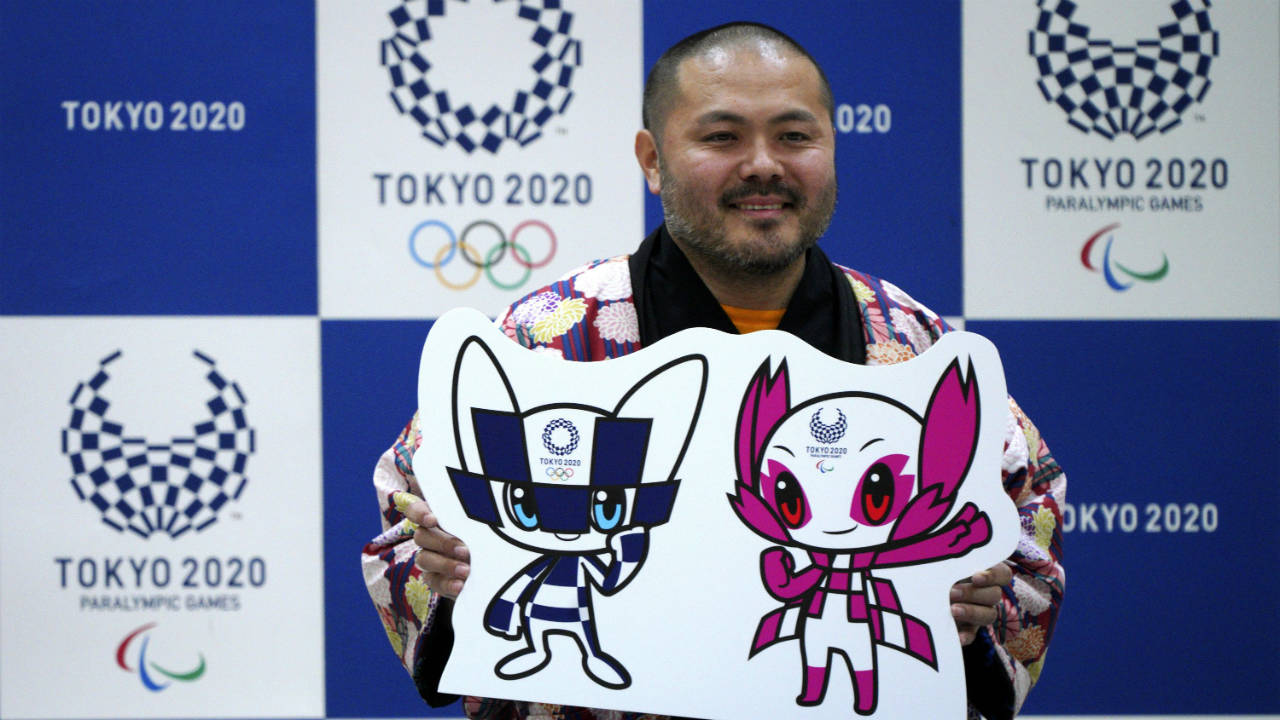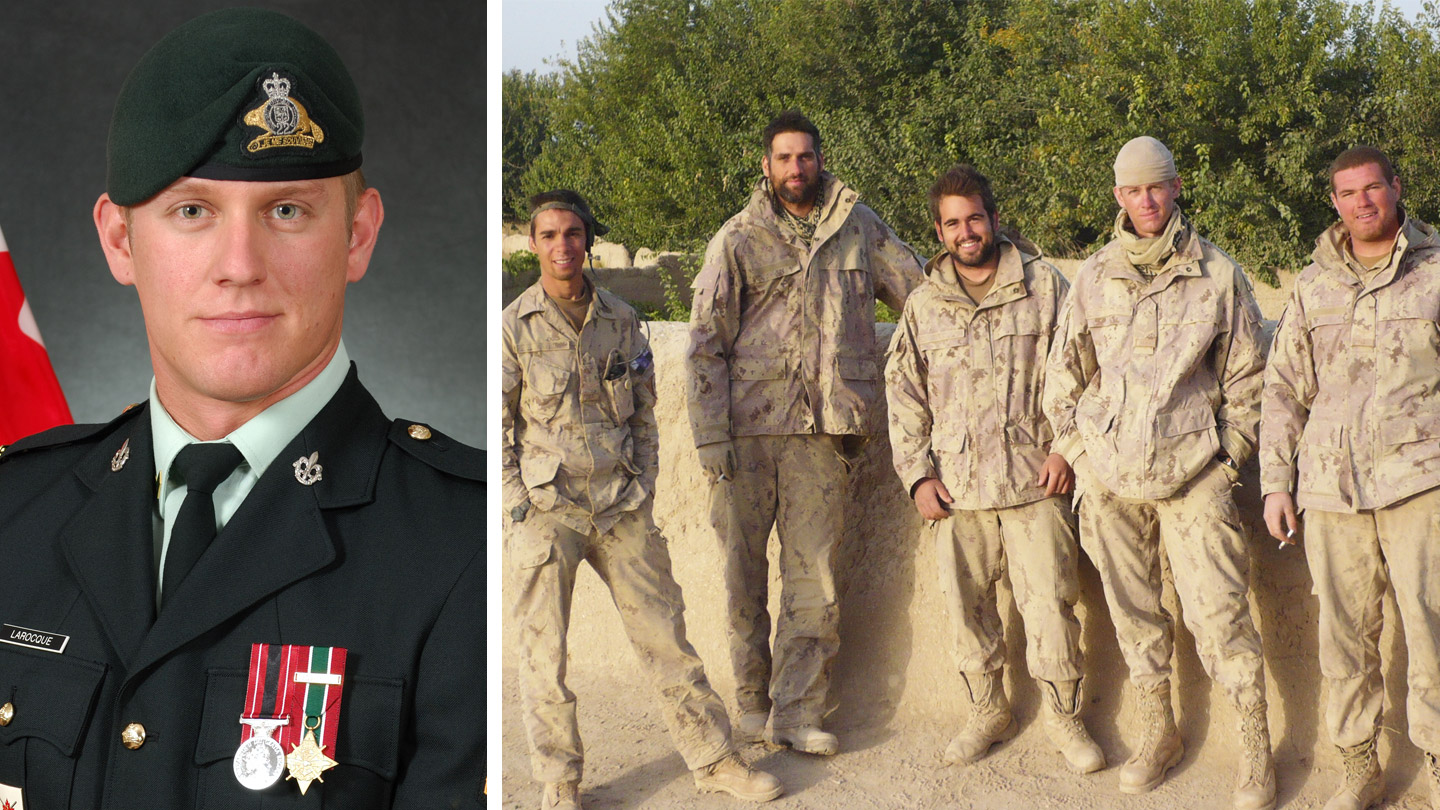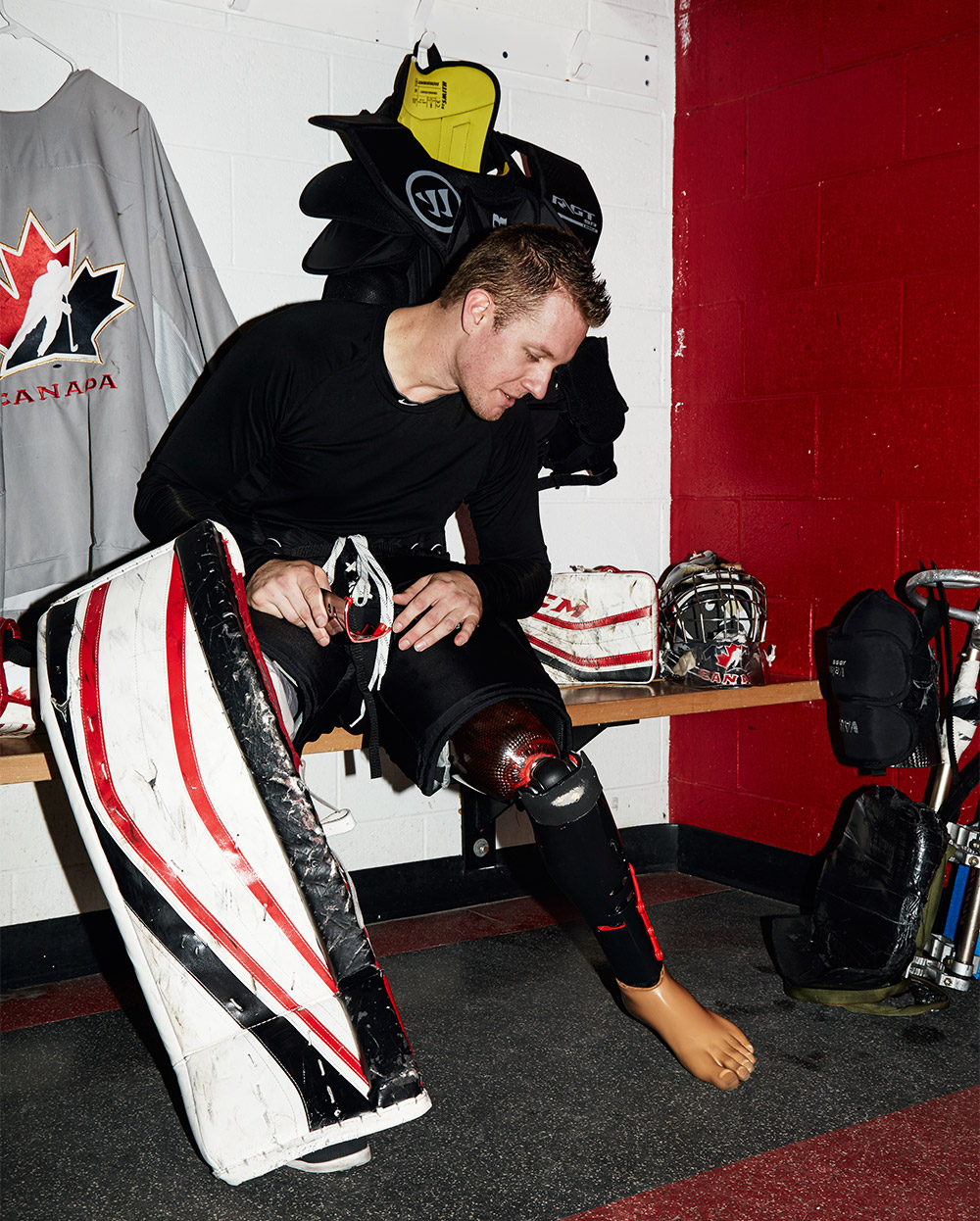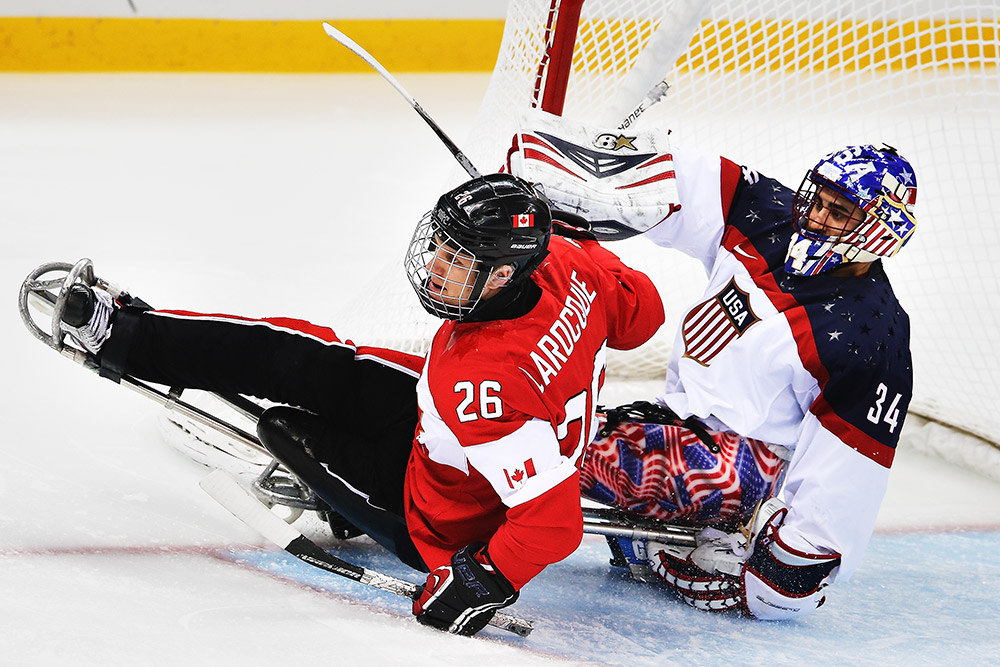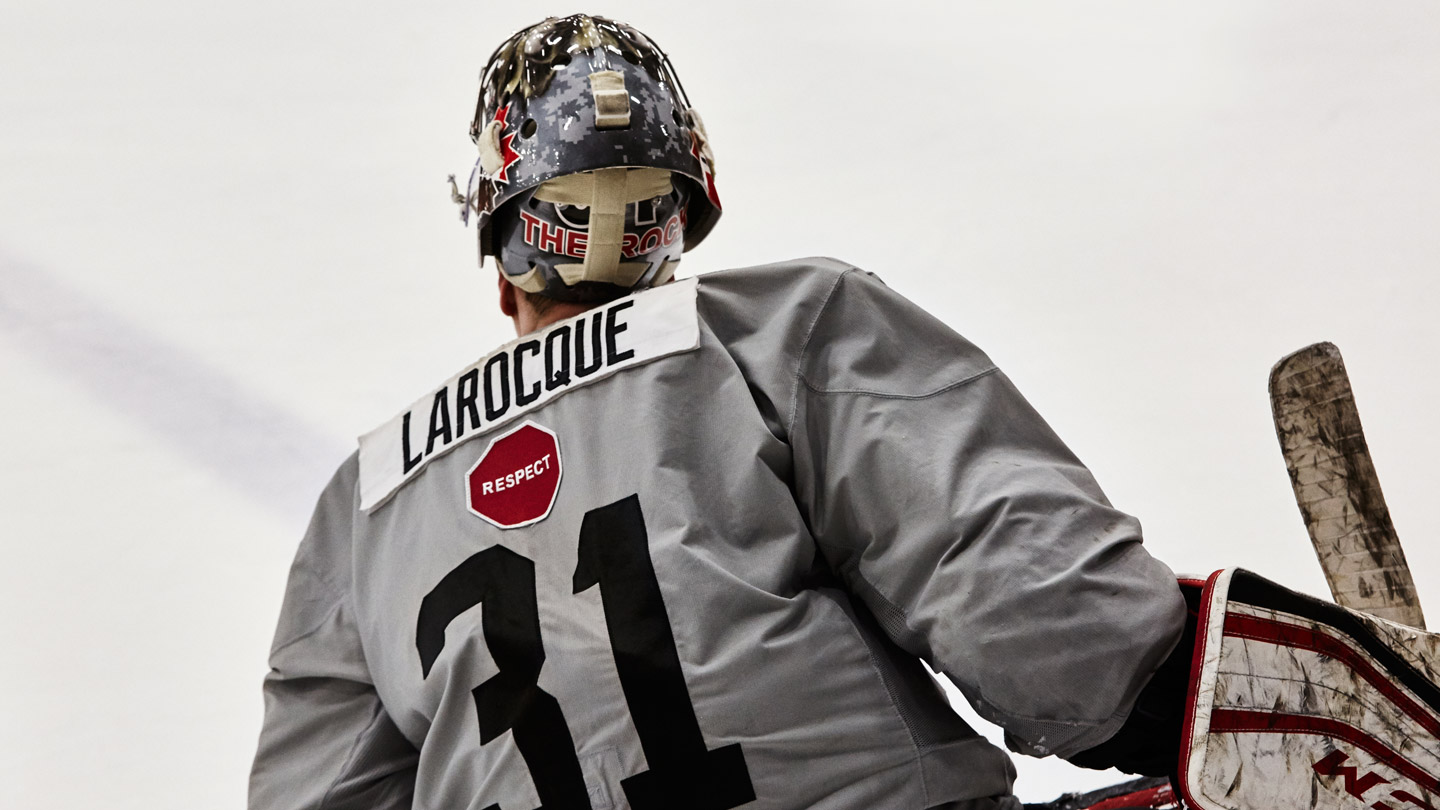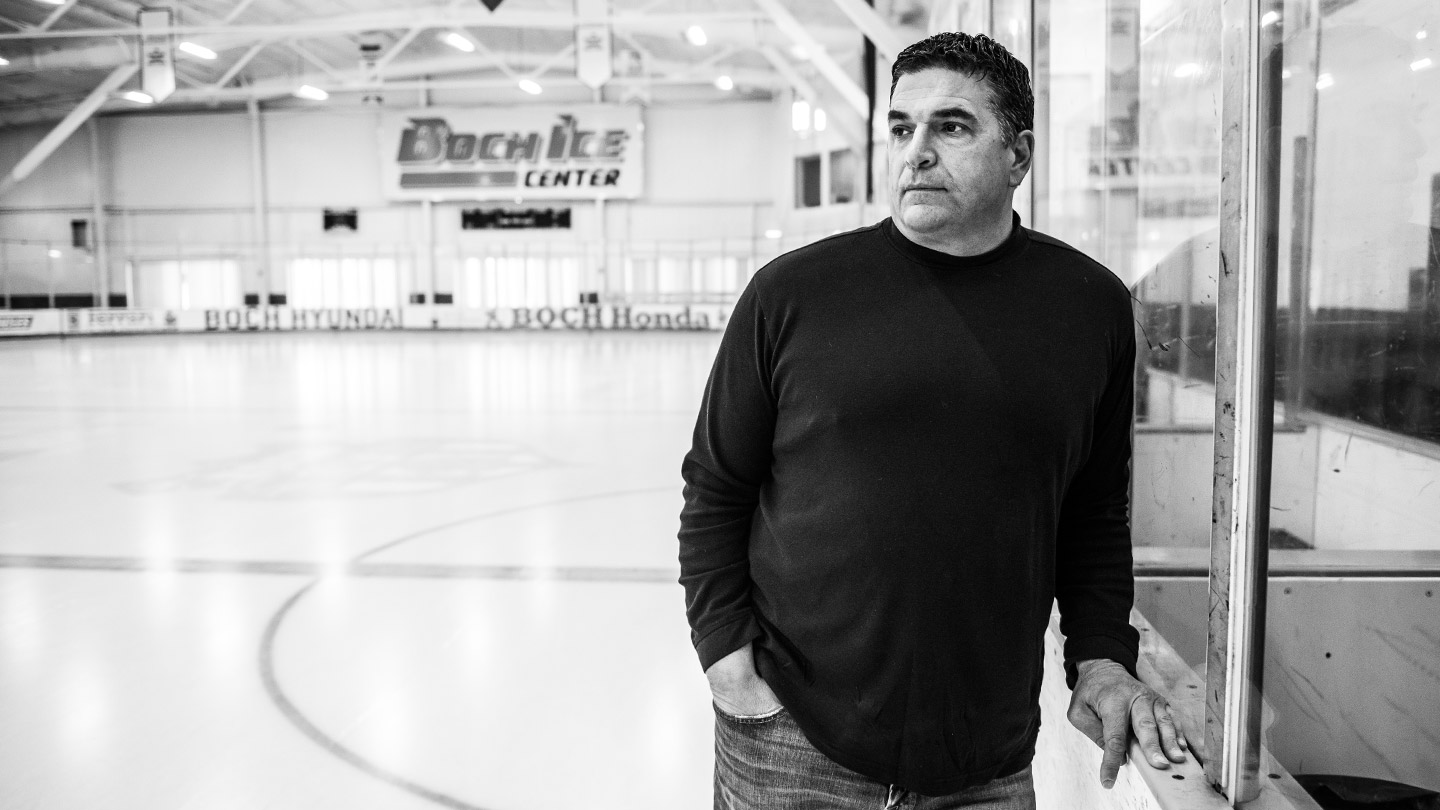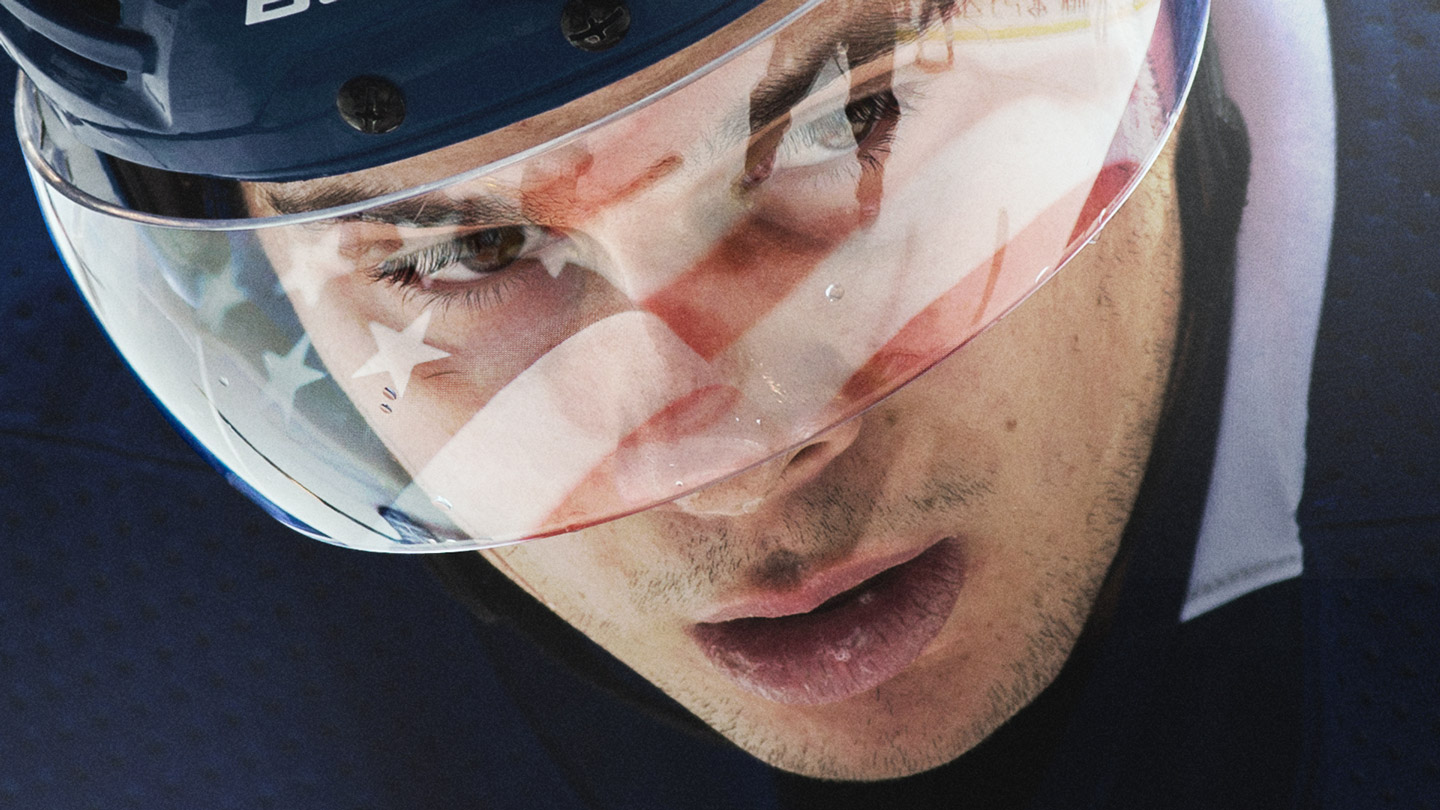Size isn’t the only explanation teammates have as to why Larocque adapted so quickly to the net. Forward Adam Dixon boils it down to this: “He’s French and he’s obviously a crazy good athlete, so he just does what he wants.” When he played forward, Larocque was one of the best on the team at tipping pucks. Captain Greg Westlake points out he was a great shot-blocker on the penalty kill, too. “Hmm,” Westlake says, “maybe we should’ve seen this coming.” Larocque is also a workhorse. You could slap his comments about effort and determination on a motivational poster: “If you have a goal in your life, you cannot wait for somebody to help you to reach it. If you want something, work for it.”
Larocque has applied a military-style work ethic to hockey, and he’s brought the manners and grooming, too. Dixon is sometimes Larocque’s roommate on the road, and he’s pretty sure his buddy isn’t a fan. “Dom’s a military man, and I don’t live a military lifestyle,” Dixon says. “He’s very clean.” Larocque agrees, “especially compared to Adam,” he says, with raised eyebrows. “He’s always early for team meals, meetings, you name it,” Babey says. “He’s always well groomed, his face is shaved, no mullet.”
Larocque doesn’t call Babey “coach,” it’s “sir.”
Perhaps the most valuable of assets from the goalie’s military past, in Babey’s mind, are Larocque’s concentration and his unflappable disposition. “On the ice what I see is a player very focused on the mission ahead, the tactics and executing properly,” says Babey. “That’s where his mindset comes out, too, in terms of his play. He’s that calming influence, you know? Military people, things are happening, everyone’s running around and they’re calm, getting it done. He’s calm in battle. That keeps everyone else calm.”




